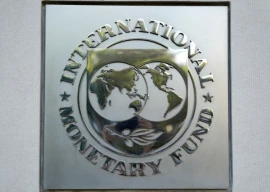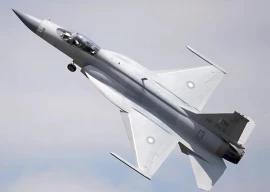
Steady and smooth supply of cotton from farms has negated the doomsayers, who sparked fears earlier in the season when floods damaged some crop in Sindh, with storages now brimming with the commodity and supply outstripping demand.
So far, around 10 million bales have reached the market and total production this season is expected to be in the range of 12.5 to 13.5 million bales, people associated with cotton trade say. High-yielding and disease-resistant Bt cotton variety has been planted over 80 per cent of the area, which gives output of 20 to 35 maunds (37.32 kg) per acre compared to seven maunds produced by traditional varieties.
According to a dealer, cotton supply will continue by the end of season in April and leave a surplus for the next season.
In the backdrop of this scenario, prices, after remaining stable at Rs5,300 for quite some time, have started falling and stood at Rs4,900, sparking worries for farmers and processors.
In the New York market, prices also stood lower at 86.29 cents per pound for the benchmark March contracts compared to last season’s peak at $2.37 per pound. Weak demand from China, which sent prices soaring last season, was a major factor behind the slide in the international market because it has surplus commodity. China also buys yarn from Pakistan.
“Prices remain low by December and start rising in January when supply slows down,” said Bilar Qamar, analyst at JS Global Capital while basing his views on historical trends.
Unlike last season, he saw spinning mills face a hard time in the wake of low yarn prices, but composite mills – having spinning to textile manufacturing units – would sustain the difficult conditions. Last season, the textile sector made handsome profits as it bought cotton at around Rs6,000 to Rs7,000 and sold in the range of Rs10,000 to Rs13,000.
According to cotton dealer and exporter Shakil Ahmed, cotton buyers, including ginning and spinning mills, were reluctant as they could not find onward takers in the domestic and international markets. In the domestic arena, yarn prices remained low while importers were not so enthusiastic about Pakistani cotton as better Indian and US varieties were available.
Ahmed said rains and floods had damaged cotton quality in Sindh while in Punjab most of the better produce had already been sold in early season, driving away buyers from the market. “At present, quality issue has sapped energy out of cotton trade.”
He said major importers of Pakistani cotton were Malaysia, Indonesia, Thailand and Bangladesh, who made purchases by the time Indian crop arrived in the market in September, which had better quality and low waste content. “Pakistani cotton is imported mainly for blending purposes.”
Domestic textile mills also import raw cotton every season to process it to meet the specifications of international buyers. “This year, 1 to 1.2 million bales are expected to be imported,” Ahmed said.
In a meeting last week, the National Assembly’s textile committee asked the government to direct the Trading Corporation of Pakistan (TCP) to buy cotton from the domestic market in order to stabilise prices.
However, Ahmed cautioned that if TCP bought low-grade cotton, it would not find any buyers and would lose the money. “TCP must be selective and only buy quality cotton, which will attract the textile mills. Prices of this cotton will also increase in coming months, which will give some profit to TCP,” he said.
Published in The Express Tribune, December 19th, 2011.


















COMMENTS
Comments are moderated and generally will be posted if they are on-topic and not abusive.
For more information, please see our Comments FAQ